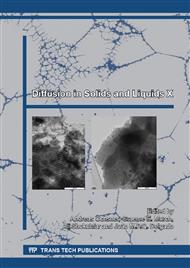p.160
p.166
p.172
p.178
p.183
p.188
p.194
p.200
p.207
Improved Surface Quality by the Process of Vibratory Grinding
Abstract:
The main purpose of this work is the energy saving by reducing friction and minimizing wear to avoid losses by raising the properties of nanomaterials on the surface layer. Therefore, we develop approaches for studying the tribological behavior phenomena concerning materials on surfaces of the layers to define the mechanical and tribological properties of materials to improve the surface layer materials of the treated parts. It was used for the vibratory grinding method of chemical mechanical processing surface using the technology of low-frequency vibration in the treatment of metal parts in the presence of chemical additives, which have a great influence on the improvement of mechanical and geometrical parameters (roughness, fatigue resistance, corrosion resistance, micro and macro hardness, structure) of mechanical parts. This method of vibratory grinding has great advantages such as the treatment of complex mechanical parts, the ability to process parts of different types and shapes at the same time. It is also known to be an environmentally friendly process. Thus this work consisted of a surface treatment by vibratory grinding of samples of different materials.
Info:
Periodical:
Pages:
183-187
Citation:
Online since:
July 2015
Authors:
Price:
Сopyright:
© 2015 Trans Tech Publications Ltd. All Rights Reserved
Share:
Citation:


